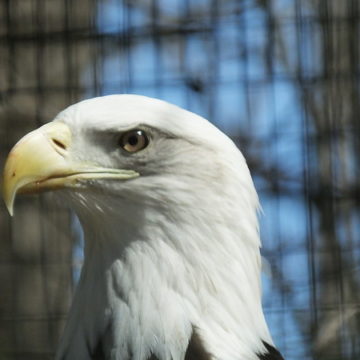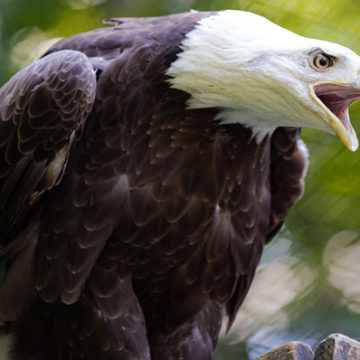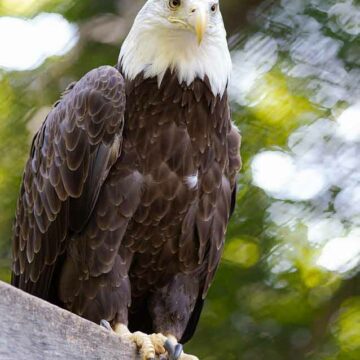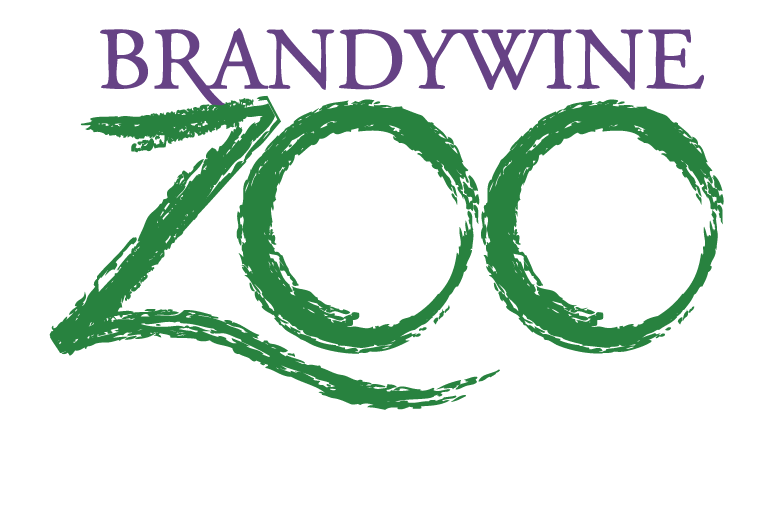BALD EAGLE
HALIAEETUS LEUCOCEPHALUS
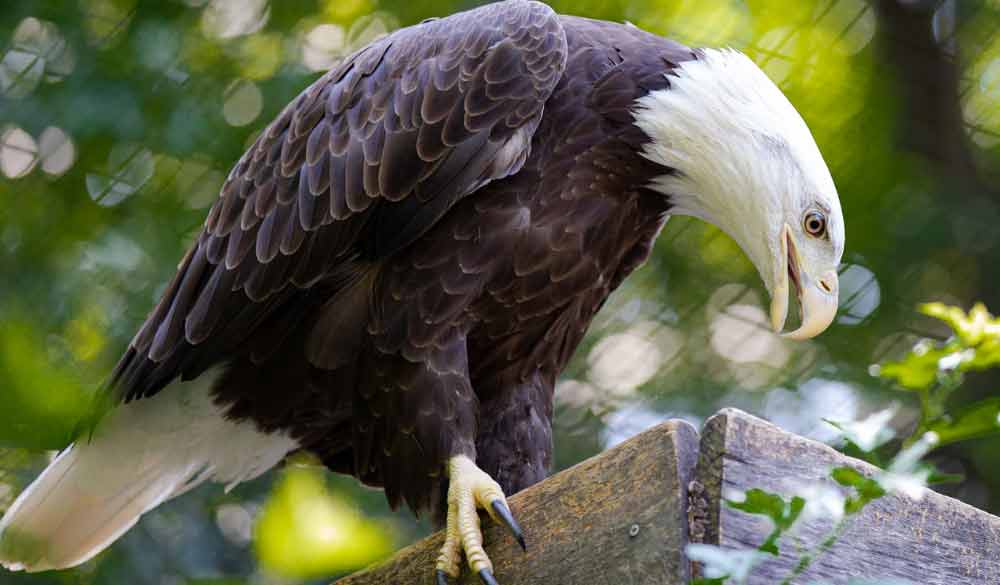
HABITAT
Forested areas near bodies of water such as lakes, reservoirs, rivers, marshes, and coast lines.
GEOGRAPHIC REGION AND RANGE
Bald eagles are native to Canada, Mexico, Saint Pierre and Miquelon, and the United States.
DIET
Carnivore – fish and a wide variety of birds, reptiles, amphibians, invertebrates, and mammals. Common prey includes salmon, herring, catfish, shad, crabs, rabbits, and muskrats.
PHYSICAL DESCRIPTION
Mature adult bald eagles have dark brown bodies and wings with distinguishable white heads and tails. Their beaks and legs are a bright yellow. Like many birds of prey, females are larger than males.
LIFESPAN
Natural Habitat: 15-20 years
Under Human Care: 20-30 years
THREATS
Bald eagles were on the Endangered Species list in 1978 due to a dramatic population decline from heavy use of DDT, and hunting. In June 2007, after a spectacular recovery, the bird achieved a status of least concern. Lead poisoning from hunter-shot prey and contaminated watersheds, motor vehicle collisions, and habitat destruction continue to be a threat.
STATUS
Least Concern
FUN FACTS
Bald eagles build the largest nest of all birds. They are up to 4 feet deep and 6 feet in diameter.
Dichlorodiphenyltrichloroethane, commonly known as DDT, is an insecticide that poisons wildlife and weakens the shell of bald eagle eggs and prevents them from hatching.
The United States declared the bald eagle as the national symbol when the great seal of the US was adopted in 1782.
The bald eagle is the only eagle native to North America.
Bald eagles develop their white head feather when they are 4-5 years old.
They can survive without food for several days. When food is available, bald eagles often gorge and store food in their crop for later digestion.
What are AZA Zoos doing for Bald Eagles?
Bald Eagles are not in a managed breeding program because they are so readily available from wildlife rehabilitators. In fact, US law prevents zoos from exhibiting releasable bald eagles at all. This means every Bald Eagle, in every zoo, aquarium, nature center, or other setting in the US, is a non-releasable individual. Some of these birds may have wing injuries, eye injuries, developmental problems (such as becoming imprinted), or other health issues caused from such as lead poisoning or other things. In giving these non-releasable birds a second chance, they can act as ambassadors for their species and teach the public about the issues they face in the wild.
More images of our Bald Eagle
